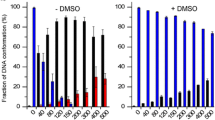Abstract
Electron spin resonance (ESR) analyses were performed to clarify whether glioblastoma cells scavenge hydroxyl radicals (·OH) generated by x-ray irradiation. The rate of bioreduction of nitroxides by three human glioblastoma cells was also evaluated by the same technique and compared with their x-ray sensitivity. Aerated culture media containing 200 mM of 5,5-dimethyl-1-pyrroline-N-oxide (DMPO) with or without U87MG cells were irradiated with x-rays at a dose of 20 Gy. ESR was measured immediately after each irradiation. Continuous changes of the ESR spectra of 4-hydroxy-2,2,6,6-tetramethylpiperidine-1-oxyl (Tempol) were analyzed in cell suspensions of TK1, U87MG, and A172 at a concentration of 1.0×107 cells/ml containing 5 μM Tempol. As a result, the signal of DMPO-OH in the U87MG cell suspension decayed faster than that in the control culture media without cells, and the rate of bioreduction of Tempol in each glioblastoma cell suspension was correlated with the x-ray sensitivity defined from the colony-forming assay in those cell lines. It was indicated that the resistance of glioblastoma cells to ionizing radiation could be closely related to their ability to scavenge radical species generated by ionizing radiation.
Similar content being viewed by others
References
Hall EJ (1994) Radiobiology for the radiologist. JB Lippincott, Philadelphia, pp 3–15
Roots R, Okada S (1975) Estimation of lifetimes and diffusion distances of radicals involved in x-ray-induced strand breaks or killing of mammalian cells. Radiat Res 64:306–320
Steel GG (2002) Basic clinical radiobiology. Introduction: the significance of radiobiology for radiotherapy. Arnold, London, pp 1–7
Boag JW (1975) The time-scale in radiation biology. 12th Failla Memorial Lecture. In: Nygaard OF, Adler HI, Sinclar WK (eds) Radiation research. Academic Press, San Diego
Chapman JD, Doern SD, Reuvers AP, et al. (1979) Radioprotection by DMSO of mammalian cells exposed to x-rays and to heavy charged-particle beams. Radiat Environment Biophys 16:29–41
Tsuboi K, Yoshii Y, Nose T (1996) Establishment of a human glioblastoma cell line TK-1. Human Cell 9: 125–127
Westermark B (1973) The deficient density-dependent growth control of human malignant glioma cells and virus-transformed glia-like cells in culture. Int J Cancer 12: 438–445
Bigner SH, Mark J, Bigner DD (1983) Chromosomal composition of four permanent cultured cell lines derived from human gliomas. Cancer Genet Cytogenet 10:335–349
Kubota N, Okada S, Inada T (2000) Wortmannin sensitizes human glioblastoma cell lines carrying mutant and wild type TP53 gene to radiation. Cancer Lett 161:141–147
Takahashi A, Ohnishi K, Wang X, et al. (2000) The difference of p53 on the radiation enhancement of thermosensitivity at different LET. Int J Radiat Oncol Biol Phys 47:489–494
Tribius S, Pidel A, Casper D (2001) ATM protein expression correlates with radioresistance in primary glioblastoma cells in culture. Int J Radiat Oncol Biol Phys 50:511–523
Halliwell B, Gutteridge JMC (1999) Free radicals in biology and medicine. Oxford University Press, New York, pp 351–429
Kocherginsky N, Swartz HM (1995) Nitroxide spin labels: reactions in biology and chemistry. CRC Press, Boca Raton, Florida, 113–147
Swartz HM, Sentjurc M, Morse PD (1986) Cellular metabolism of water-soluble nitroxides: effect on rate of reduction of cell/nitroxide ratio, oxygen concentrations and permeability of nitroxides. Biochem Biophys Acta 888:82–90
Iannone A, Tomashi A (1991) Nitroxide radicals, their use as metabolic probes in biological model systems: an overview. Acta Pharm Jugosl 41:277–297
Halpern HJ, Jaffe DR, Nguyen TD, et al. (1991) Measurement of bioreduction rates of cells with distinct responses to ionizing radiation and cisplatin. Biochem Biophys Acta 1093: 121–124
Mitchell P (1961) Coupling of phosphorylation to electron and hydrogen transfer by a chemi-osmotic type of mechanism. Nature 191:144–148
Author information
Authors and Affiliations
Corresponding author
Rights and permissions
About this article
Cite this article
Moritake, T., Tsuboi, K., Anzai, K. et al. Reduction of nitroxides and radioprotective ability in glioblastoma cells. Brain Tumor Pathol 20, 1–5 (2003). https://doi.org/10.1007/BF02478940
Received:
Accepted:
Issue Date:
DOI: https://doi.org/10.1007/BF02478940




